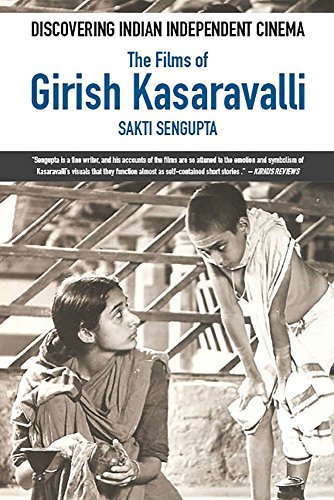India is a diverse country. It cannot be defined by a singular commonality running throughout the region. You go from North to South and you will be surprised to see the variety that this place has to offer in terms of culture, language, geography, literature and other vitals that define a place. Similar, if you go across from the East to the West. Each place has its own distinct flavor.
Same can be said for Indian Cinema. The problem that has arisen with Indian Cinema and its image internationally is that it is thought to be synonymous with Bollywood, or the Hindi film industry based in Mumbai.
But if you have any slight idea about the demography and geography of the country, you would know that it is a very limiting definition.
Indian Cinema is much bigger than Bollywood, or the elaborate song and dance routines that it is identified with all over the world. The melodrama and the over-the-top action sequences do form a major part of commercial Bollywood films but Indian Cinema has got a lot more to offer to students of films.
The vast differences in the social and cultural milieu of the common Indian person gives rise to a similarly varied bank of stories and experiences. Also, the history of India informs us that it has always mingled with foreign cultures and that intermingling at the grassroot level has given birth of completely unique and hybrid forms of art and literature.
It has stories concerning the nitty-gritties of the most aristocratic families to the everyday struggles of the poorest individual.
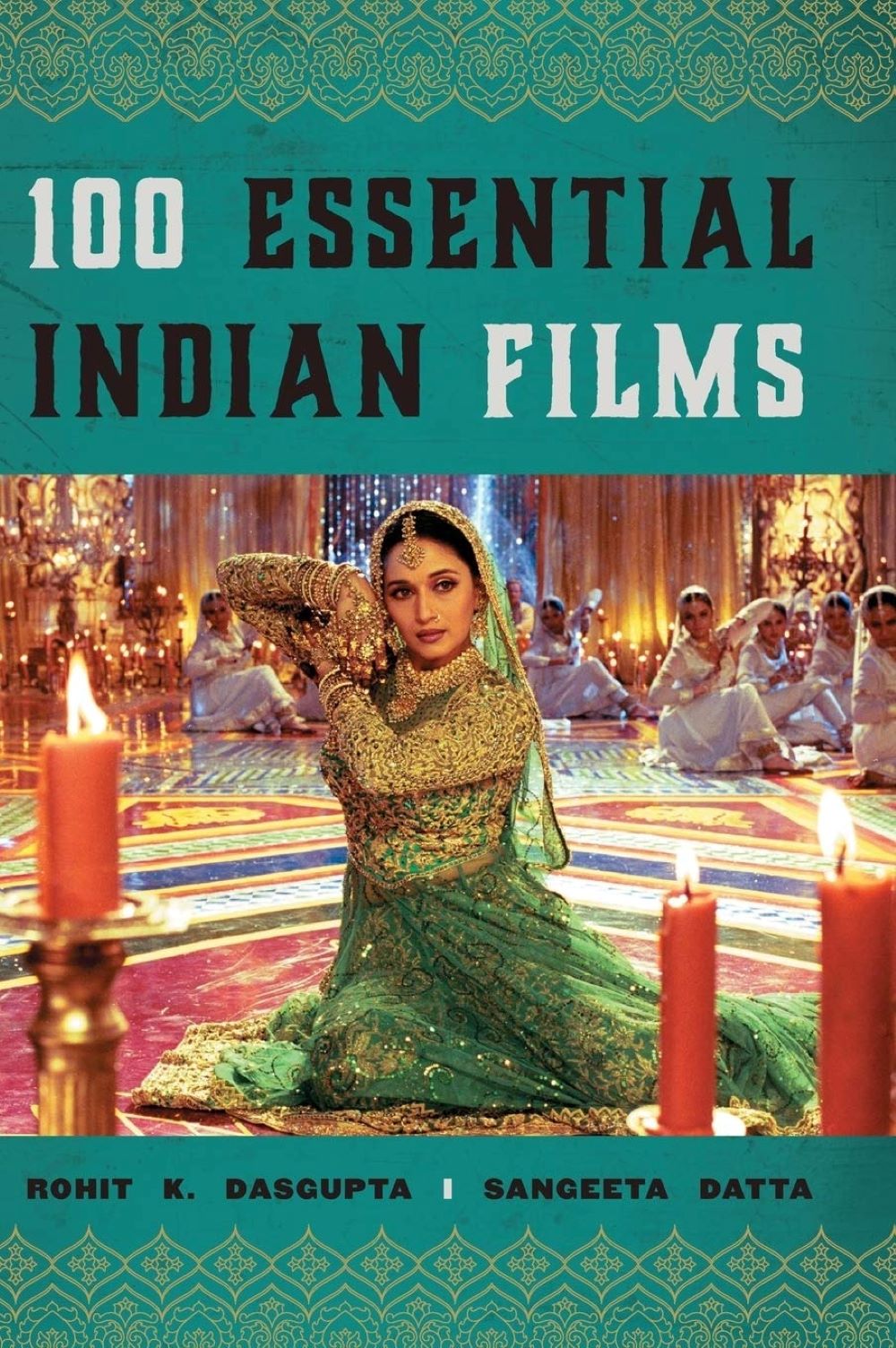
Even the linguistic differences that are present here are so vast that there are entire industries running parallelly, making movies after movies day in and day out. Films are one of the most common mediums of mass entertainment in the country and they are loved by people of every region.
Thus, there are many industries running here on the basis of language and culture who make films concerning their own specific issues and also issues which are pan-Indian.
Some of the major industries based on language and region are as follows – Hindi (Parts of North and Central India), Gujarati (Gujarat), Marathi (Maharashtra), Malayalam (Kerala), Tamil (Tamil Nadu), Telugu (Andhra Pradesh and Telangana), Kannada (Karnataka) and Bengali (West Bengal) among others.
To know more about the Indian Films which made a mark at international film festivals, do check this article out –
We are bringing you the best and hidden gems of these regional film industries so that it can help you as well as us in recognizing the true scale and magnitude of Indian Cinema and to get to know the real cinematic beauty of the largest filmmaking industry of the world.
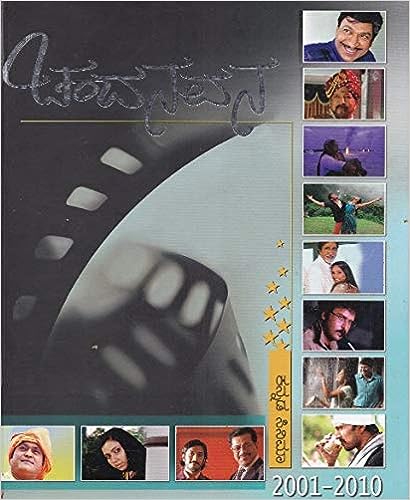
Kannada Cinema
The Kannada film industry, also known as Sandalwood, has a rich cinematic heritage dating back to the 1930s. Situated in the state of Karnataka in India, it has made significant contributions to the world of cinema, particularly in the realm of art films.
The inception of the Kannada film industry can be traced to the 1930s with the release of the first Kannada talkie, Sati Sulochana.
One of the early pioneers of art cinema in Kannada was the acclaimed director Puttanna Kanagal, who revolutionized the industry with his thought-provoking films.
Following Kanagal, directors like Girish Kasaravalli explored folklore, history and mythology in their films, presenting them with a distinct artistic flair. Girish Karnad, B.V. Karanth and Pattabhirama Reddy also contributed significantly to the development of art cinema in the region.
Kannada art filmmakers have never shied away from experimentation and embracing new technologies. Directors like P. Sheshadri and B.S. Lingadevaru have explored unconventional storytelling techniques and visual aesthetics to convey powerful messages.
Kannada art films are known for their focus on societal issues, human emotions and regional culture. Themes of rural life, tradition and the human condition have been recurrent motifs in many art films from the region. The use of regional dialects and authentic settings has added a unique flavor to these films, enhancing their artistic appeal.
Sandalwood has produced films across various genres, including commercial blockbusters, family dramas and gripping thrillers. However, it is the art films that have gained international acclaim and recognition for their exceptional storytelling and cinematic brilliance.
The Kannada film industry has received numerous accolades and awards at prestigious film festivals both in India and abroad. Over the years, the industry has experienced several phases of growth and diversification, driven by visionary directors, talented actors and passionate producers.
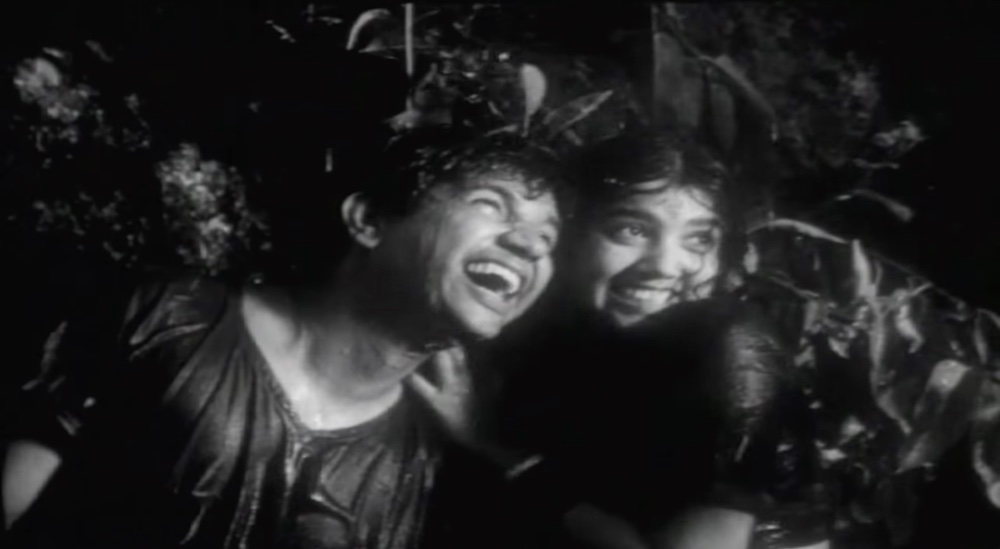
1 Abachurina Post Office
- Director – N. Lakshminarayan
- Year Released – 1973
- Major Awards / Nominations – National Award for the Best Feature Film in Kannada; Karnataka State Film Award for Best Film
- Other Films by this Director – Bettada Hoovu, Muyyi, Naandi, Uyyale
Abachurina Post Office (translated as Post-office in Abachur) is based on a short story of the same name written by Poornachandra Tejaswi. The film revolves around Bobanna, who works on a coffee farm and also helps as the postman in his village. He becomes friends with the villagers who can’t read or write and they ask him to help with their letters. Bobanna always keeps their letters private, but his mean mother-in-law tells others about the secret message in one letter, which causes a big problem and lots of gossip in the village.
N. Lakshminarayan was a renowned Kannada director, considered the first explicitly experimental filmmaker in Kannada cinema and his contributions to the industry left a lasting impact. As a visionary filmmaker claimed the influence of renowned Italian director Vittorio De Sica and the iconic Indian filmmaker Satyajit Ray. These influences were evident in his early attempts at creating art cinema in the Kannada language.
Even before the Navya Movement-inspired notion of film as an extension of literature gained prominence, N. Lakshminarayan was experimenting with innovative storytelling techniques and visual storytelling methods.
It was a pioneering effort in the Kannada film industry, setting a new precedent for artistic expression through cinema.
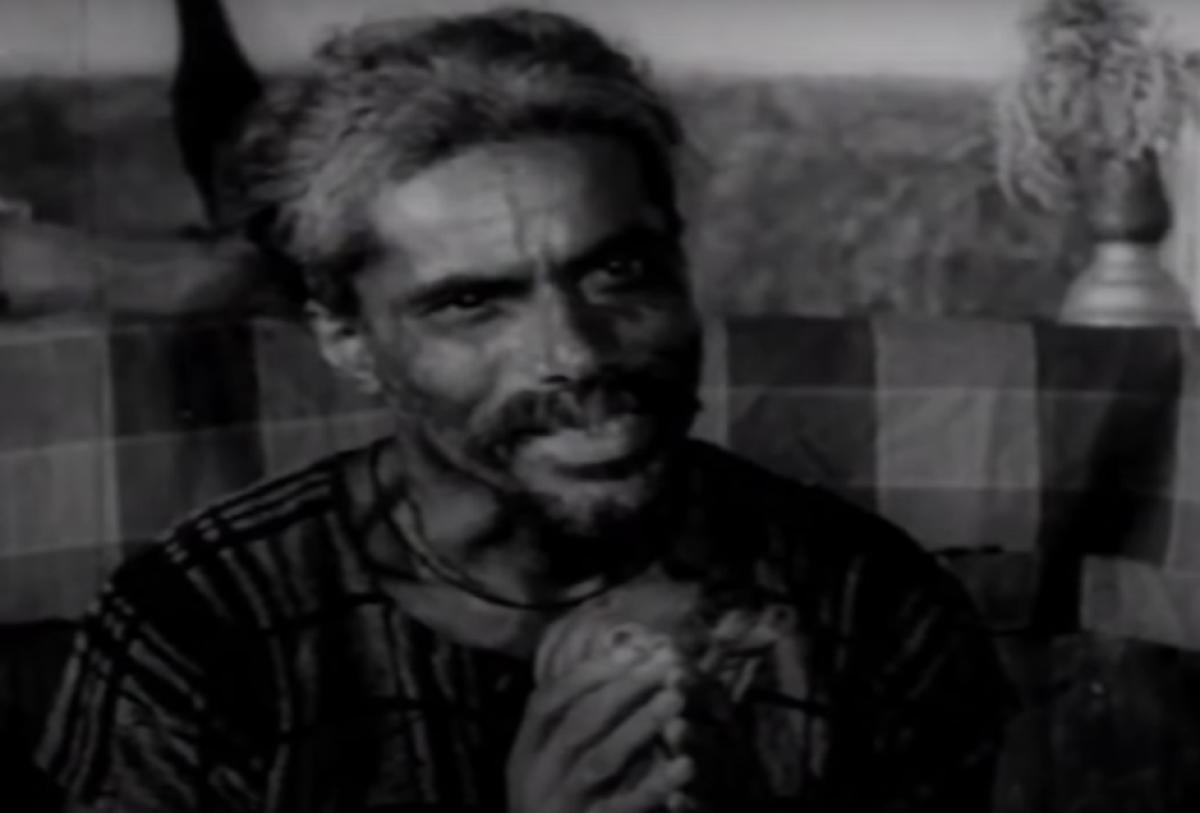
2 Chomana Dudi
- Director – B. V. Karanth
- Year Released – 1975
- Major Awards / Nominations – National Award for the Best Feature Film; Karnataka State Film Awards for First Best Film
- Other Films by this Director – Vamsha Vriksha
Chomana Dudi (translated as Choma’s Drum) is based on a novel of the same name written by acclaimed Kannada writer Shivarama Karanth. The film revolves around the life of Choma, a Dalit (previously known as untouchable) bonded laborer working on the land of an oppressive landlord in rural Karnataka. Choma is a downtrodden and marginalized individual who struggles to break free from the shackles of caste-based discrimination and feudal exploitation.
Choma’s desire for liberation grows, and he becomes increasingly aware of the oppressive systems governing his life. The film poignantly depicts the harsh realities of caste-based discrimination and the struggles faced by the Dalit community in rural India. It sheds light on the inhumane practice of bonded labor prevalent in certain regions during that era.
The stark black and white cinematography by S. Ramachandra enhances the film’s raw and realistic ambiance, making it an aesthetically compelling visual experience.
B. V. Karanth collaborated with the celebrated playwright and actor Girish Karnad on numerous projects. Their collaboration, characterized by creativity and vision, left an indelible mark on the Kannada film industry and enriched the realm of art films with compelling narratives.
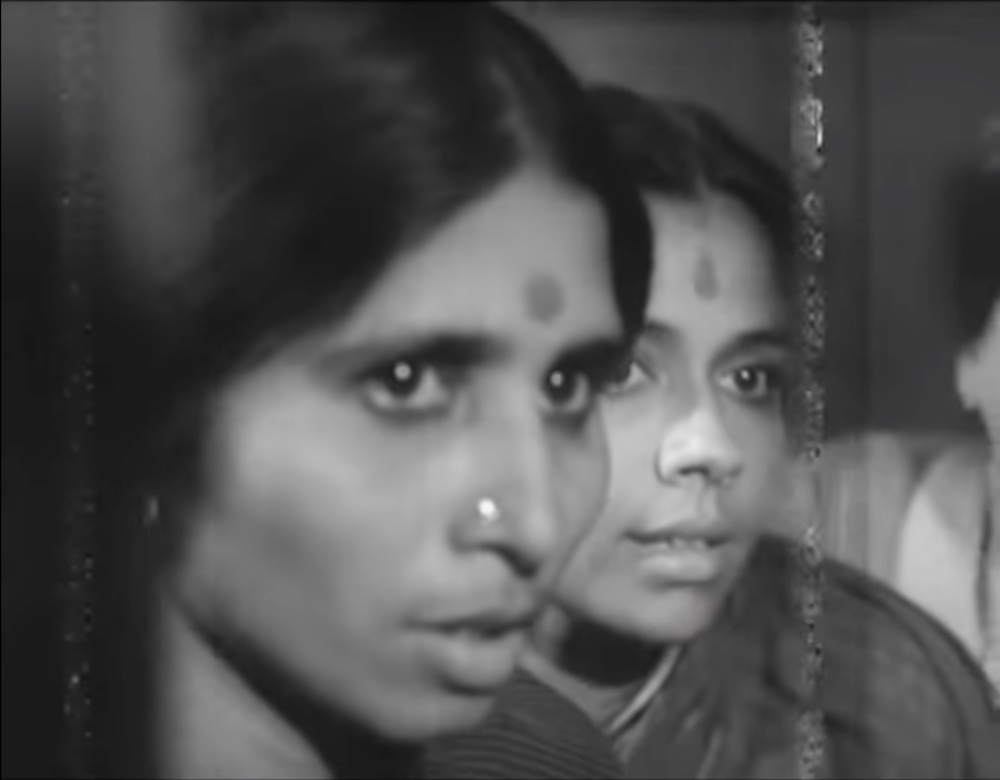
3 Samskara
- Director – Pattabhirama Reddy
- Year Released – 1970
- Major Awards / Nominations – National Award for the Best Feature Film; Karnataka State Film Award for Second Best Film and Best Cinematographer
- Other Films by this Director – Devara Kaadu, Chanda Marutha
Samskara (translated as Funeral Rites) is about the last rites of Naranappa, a Brahim who didn’t follow any communal rules till his lifetime such as consuming meat, alcohol and even marrying a Dasi, a prostitute. Naranappa was a rebellious soul who vehemently opposed Brahminism.
Given Naranappa’s unorthodox lifestyle and lack of immediate family, a perplexing situation arises regarding who should conduct his last rites and cremate his remains. Tasked with providing a solution, Praneshacharya finds himself torn between upholding tradition and dealing with the complexities of his friend’s unconventional life choices.
Samskara remains an important cinematic achievement in the history of Indian art cinema. Pattabhirama Reddy’s sensitive direction and Girish Karnad’s dialogue and performance, along with the thought-provoking themes of the film, have left an enduring impact on audiences and critics alike.
The film’s success brought the Kannada film industry to the global stage, showcasing the region’s potential for producing meaningful and artistic cinema. It also solidified Pattabhirama Reddy’s reputation as a visionary filmmaker with a keen understanding of complex human emotions and societal dynamics.
It continues to be celebrated as a timeless classic that deftly explores the intricacies of human nature and the struggle between tradition and modernity.
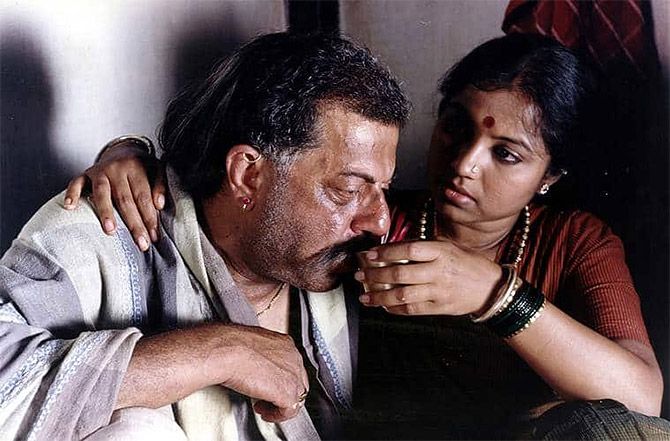
4 Kanooru Heggadithi
- Director – Girish Karnad
- Year Released – 1999
- Major Awards / Nominations – National Award for the Best Feature Film in Kannada
- Other Films by this Director – Kaadu, Tabbaliyu Neenade Magane, Ondanondu Kaladalli
Kanooru Heggadithi (translated as Kanooru Headwoman) is based on The House Of Kanooru by Kuvempu. The film revolves around Subbamma (Tara), who is the third wife of Chandre Gowda (Girish Karnad), is a strong and independent woman in the household. She often supports her female friends in standing up against unfair treatment by men.
When her husband passes away, she uses her authority to seek justice for all the wrongs women have endured at the hands of men. However, her actions lead to her own downfall, and a liberal intellectual named Hooviah takes her place.
Girish Karnad is a prominent Indian playwright, actor, and filmmaker who have made significant contributions to art cinema. As a director, his films delved into complex human emotions and societal issues, blending realism with artistic vision. His films showcased his prowess in storytelling, earning critical acclaim and national awards.
Karnad’s cinematic brilliance and thought-provoking narratives elevated the status of art cinema in India, leaving a lasting impact on the industry and inspiring future filmmakers to explore unconventional themes and techniques. His artistic legacy continues to be celebrated and admired by cinephiles worldwide.
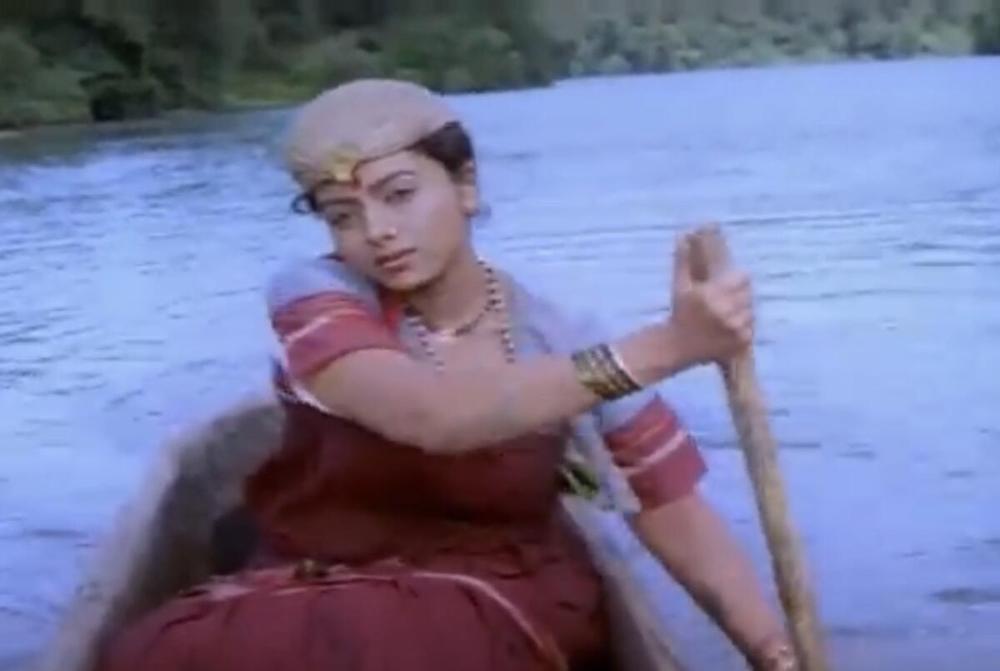
5 Dweepa
- Director – Girish Kasaravalli
- Year Released – 2002
- Major Awards / Nominations – National Award for the Best Feature Film and Best Cinematography; Karnataka State Film Award for Best Film, Best Direction, Best Actress in a lead role and Best Cinematography
- Other Films by this Director – Kanasembo Kudureyaneri, Thaayi Saheba, Tabarana Kathe, Mane, Kraurya, Ghatashraddha, Gulabi Talkies
Dweepa is based on a novel of the same name written by Na D’Souza. Dweepa is a powerful and poignant tale that delves into the lives of the people living on an island that faces an uncertain future due to the construction of a dam.
As the construction of the dam progresses, the lives of the islanders start to unravel. The government orders the evacuation of the island, and the islanders must leave their ancestral home behind. However, Nagi and Ganapa essayed by actress Soundarya and actor Avinash, are deeply attached to their land and refuse to leave, despite the mounting pressure from authorities and their own family members. Their emotional struggle with displacement and loss forms the crux of the narrative.
Girish Kasaravalli, known for his realistic and thought-provoking films, showcases his directorial brilliance in “Dweepa.” He captures the essence of the island and its inhabitants with exquisite precision. The film’s pace is slow, allowing the viewers to immerse themselves in the tranquil beauty of the island and the emotions of the characters.
Soundarya’s performance as Nagi was highly praised, earning her the Karnataka State Film Award for Best Actress as well as Best Film Award for being a producer of the film posthumously, as the film released after her tragic demise in a plane crash.
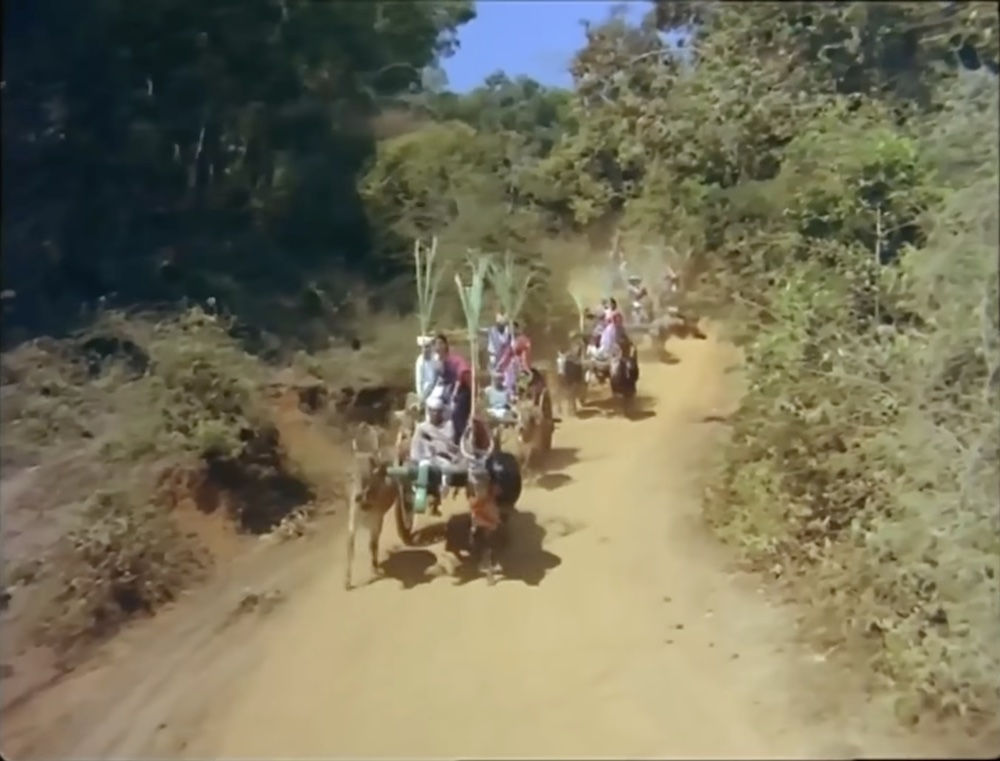
6 Singaaravva
- Director – T. S. Nagabharana
- Year Released – 2003
- Major Awards / Nominations – National Film Award for Best Feature Film in Kannada
- Other Films by this Director – Kallarali Hoovagi, Chinnari Mutha, Mysore Mallige, Santha Shishunala Sharifa, Banker Margayya, Junamada Jodi, Neela, Naviddeve Echarike
Singaaravva is based on the book Singaravva Mattu Aramane
by Chandrashekhara Kambara. The film is about a lonely and longing for a child, Singari, daughter of an avaricious upper-caste landowner who marries her off to a corpse to inherit a fortune. Then, he has her spliced to kinky Maharajah Desai, who, at the mere sight of women’s nether regions, faints with excitement, rendering him incapable of consummating the marriage.
Eventually, Singari finds herself getting impregnated by Mariya, a servant who was wronged by her father. His thirst for revenge turns into love for the put-upon heroine.
The film talks about a youthful girl yearning for companionship, love and self-discovery, finds herself confronting the heartless, self-centered, and tyrannical world of her father and the husband he has selected solely for his personal gain, disregarding his daughter’s happiness.
T. S. Nagabharana, known for his strong social commentaries, crafts the film with a sensitive and realistic portrayal of the characters and their struggles. He masterfully captures the essence of rural Karnataka, reflecting the socio-cultural fabric of the region in the film’s narrative. His films have significant themes revolving around women, children, love for the land and the belief in the importance of calling things by their rightful names.
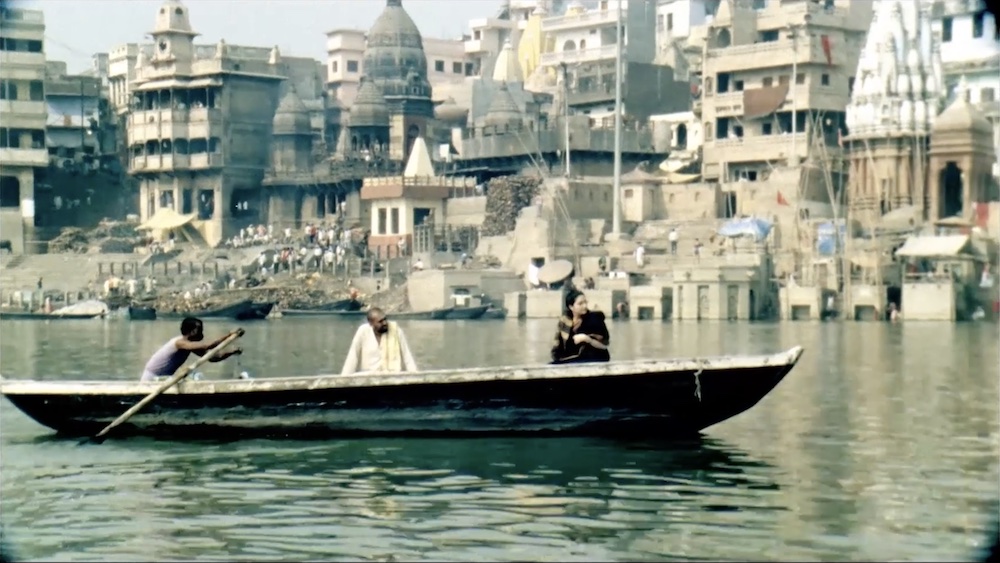
7 Vimukthi
- Director – P. Sheshadri
- Year Released – 2010
- Major Awards / Nominations – National Award for the Best Feature Film in Kannada
- Other Films by this Director – Mookajjiya Kanasugalu, Munnudi, Atithi, December-1, Thutturi, Bharath Stores
Vimukthi is about Madhavi, the only daughter of Keshavarao, a renowned practitioner of traditional Mysore paintings, experienced a profound loss of motherly affection at an early age. Madhavi’s tumultuous journey of self-discovery takes her from the confines of her troubled family life to the mystique of Kashi.
The search for her father becomes a path of understanding and healing, where she confronts her unresolved emotions and gains clarity about her identity and purpose. The experience in Kashi shapes Madhavi’s perception of life and allows her to comprehend the incomprehensible aspects of her own psyche, setting her on a path of newfound understanding and growth.
P. Sheshadri’s films have garnered praise from both audiences and critics alike. His work is celebrated for its powerful storytelling and the sensitive portrayal of social issues. Several of his films have been screened and appreciated at various international film festivals, bringing recognition to the Kannada film industry on the global stage.
P. Sheshadri’s contributions to the Kannada film industry have been significant, particularly in the genre of art cinema. Through his thought-provoking storytelling and artistic vision, he has elevated the status of Kannada cinema and brought forth stories that resonate with audiences across boundaries.
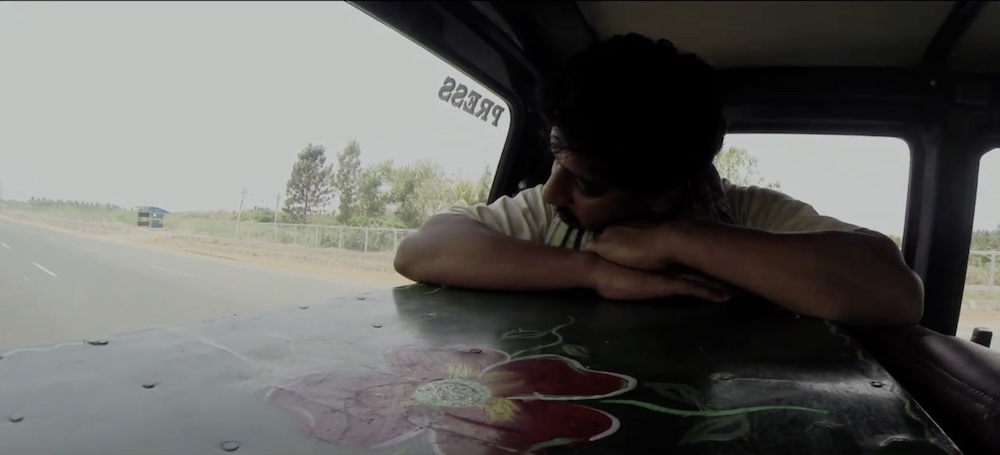
8 Harivu
- Director – Manjunatha Somakeshava Reddy aka Mansore
- Year Released – 2014
- Major Awards / Nominations – National Award for the Best Feature Film in Kannada; Karnataka state Award for Best film and Best Director
- Other Films by this Director – 19.20.21, ACT 1978, Nathicharami
Harivu is based on a real story, son’s severe illness, the farmer makes a resolute decision to take him to Bengaluru for medical treatment. Tragically, despite his efforts, the son passes away in the city, leaving the farmer grappling with the challenging task of transporting the body back to his hometown.
Harivu is the debut film of director Mansore who previously worked as a visual artist. He specialize himself in plotting tragedy in most of his films.
The works of this visionary director delve into a myriad of thought-provoking themes, encompassing urbanization and systemic oppression. Standing tall among a distinctive cohort of Kannada filmmakers, he fearlessly traverses the realm of political themes, consistently infusing his films with social consciousness and critical commentary.
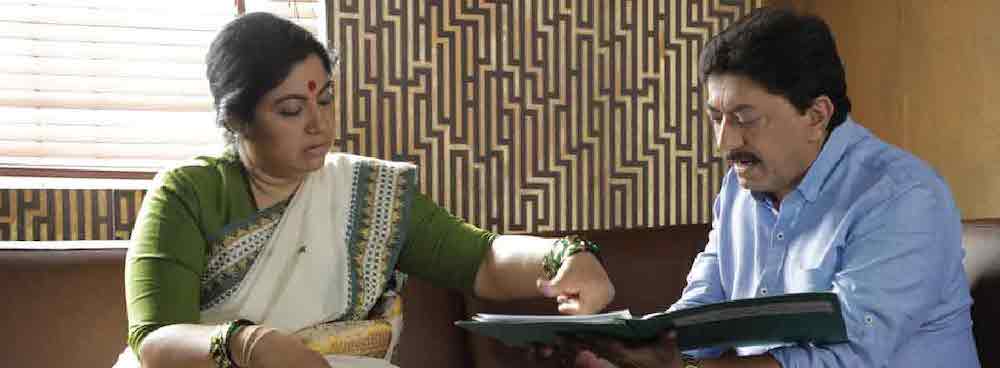
9 Hebbet Ramakka
- Director – N. R. Nanjundegowda
- Year Released – 2018
- Major Awards / Nominations – National Award for the Best Feature Film in Kannada
- Other Films by this Director – Nanu Gandhi, Nana Neenu Jodi, Nodu Baa Nammoora
Hobbit Ramakka is a political drama film about Kalleshi, a person who does construction work and also works for a powerful politician. He wants to have political power for himself. One day, a certain situation arises, and he decides to use his uneducated wife, Ramakka, a woman with limited formal education, finds herself compelled to participate in the district council election from a constituency that has been designated as reserved for women.
N. R. Nanjundegowda took a nine years gap to come up with Hebbet Ramakka. During a time when commercial cinema dominated the industry, he was instrumental in promoting art films that delved into deeper themes and social issues.
He believed in the power of cinema as a medium of artistic expression and a means to create social awareness. Gowda’s films were known for their strong narratives, thought-provoking content, and portrayal of human emotions with authenticity.
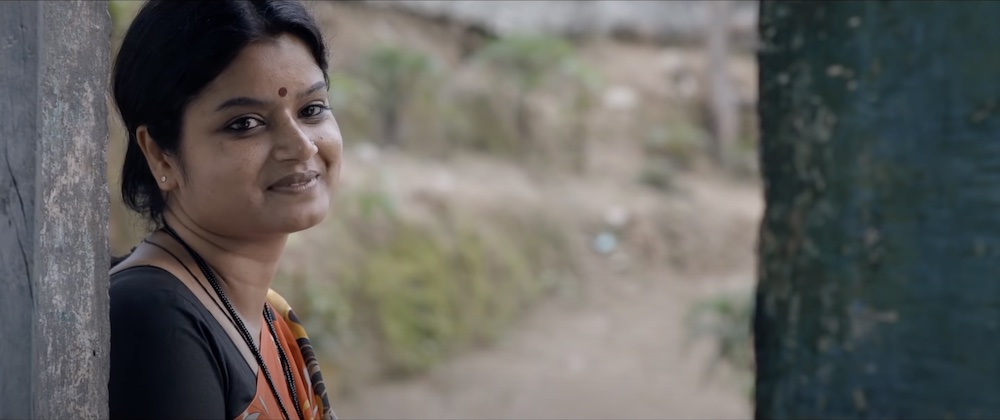
10 Akshi
- Director – Manoj Kumar
- Year Released – 2021
- Major Awards / Nominations – National Award for the Best Feature Film in Kannada
- Other Films by this Director – nil
Akshi is about a devoted brother, cares for his blind sister, Lakshmi. With the help of Kurudappa, another blind man, Ramu dreams of giving Lakshmi the gift of sight through an eye transplant. Despite facing challenges and tragedy, Ramu is determined to educate the villagers about eye donation.
So far the director of the film Manoj Kumar has only released Akshi. It is sure with Akshi that this filmmaker will continue contributing to the Kannada art cinema. He is one of the few promising names that have come up in the Kannada film industry in the past couple of years and we should definitely be on the lookout for his future work.
This rounds up our list of art films from the Kannada film industry. These comprise of some of the gems that are not as much in the public eye, but Indian Cinema is a treasure trove filled with such examples. This can be a good jump off point if you want to foray into the depths of Kannada cinema, and watching all these films and directors will definitely guide you in the direction you would want to take after that.
The Kannada film industry has come a long way since its inception, contributing significantly to the world of art films. With its unique storytelling techniques, exploration of societal issues and unwavering commitment to artistic excellence, Sandalwood has left an indelible mark on the global stage of cinema.
Despite its significant contributions, the Kannada film industry faces challenges in terms of funding, marketing and piracy. However, with increasing recognition and appreciation for art cinema worldwide, the future holds promise for the industry. Many young and talented filmmakers are now experimenting with diverse themes and styles, paving the way for a new era of Kannada art cinema.
As the industry continues to evolve and inspire, its rich heritage of art films will undoubtedly continue to shine brightly in the annals of Indian cinema.
Please do tell me in the comments below if you know of some brilliant but obscure films that I have missed. Until then keep reading and watching films. Adios!

